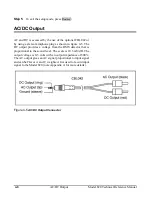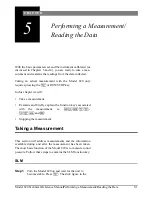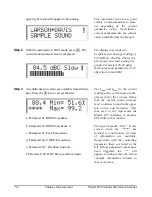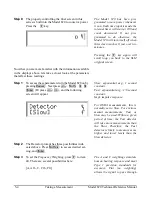
Model 820 Technical Reference Manual
Calibration
3-1
C H A P T E R
3
Calibration
Because of variation in microphone sensitivities, a sound level
meter must be calibrated to a reference sound level for accu-
rate measurements. This is easily performed with the Model
820. You will need a calibrator with an appropriate adapter for
the Model 820 microphone, such as the Larson Davis
CAL200. This Larson Davis calibrator outputs 114 dB, or 94
dB, with respect to 20 µPa, and at a frequency of 1000 Hz. At
this frequency, the relative response for A and C weightings is
the same.
NOTE: A precision calibrator is not necessary for this part of the
tutorial, but you should make it a regular practice to perform an
instrument calibration before and after you take actual measurements
in the field. However, you do not have to recalibrate the Model 820
when you change the settings.
Please note that if you use a calibrator which uses another fre-
quency some corrections may be required depending on the
weighting. The output level and the frequency of your calibra-
tor should be listed on its label. Use this level with specific
environmental and weighting corrections to calibrate the
Model 820 level.
In order to perform calibration, the Microphone Polarization
Voltage needs to be properly set.
Calibrating the Model 820
Microphone Polarization Voltage is preset by Larson Davis at
200 volts. Should this parameter be incorrect, the Model 820
will not calibrate correctly.
Step 1
Check the microphone polarization by looking at
















































